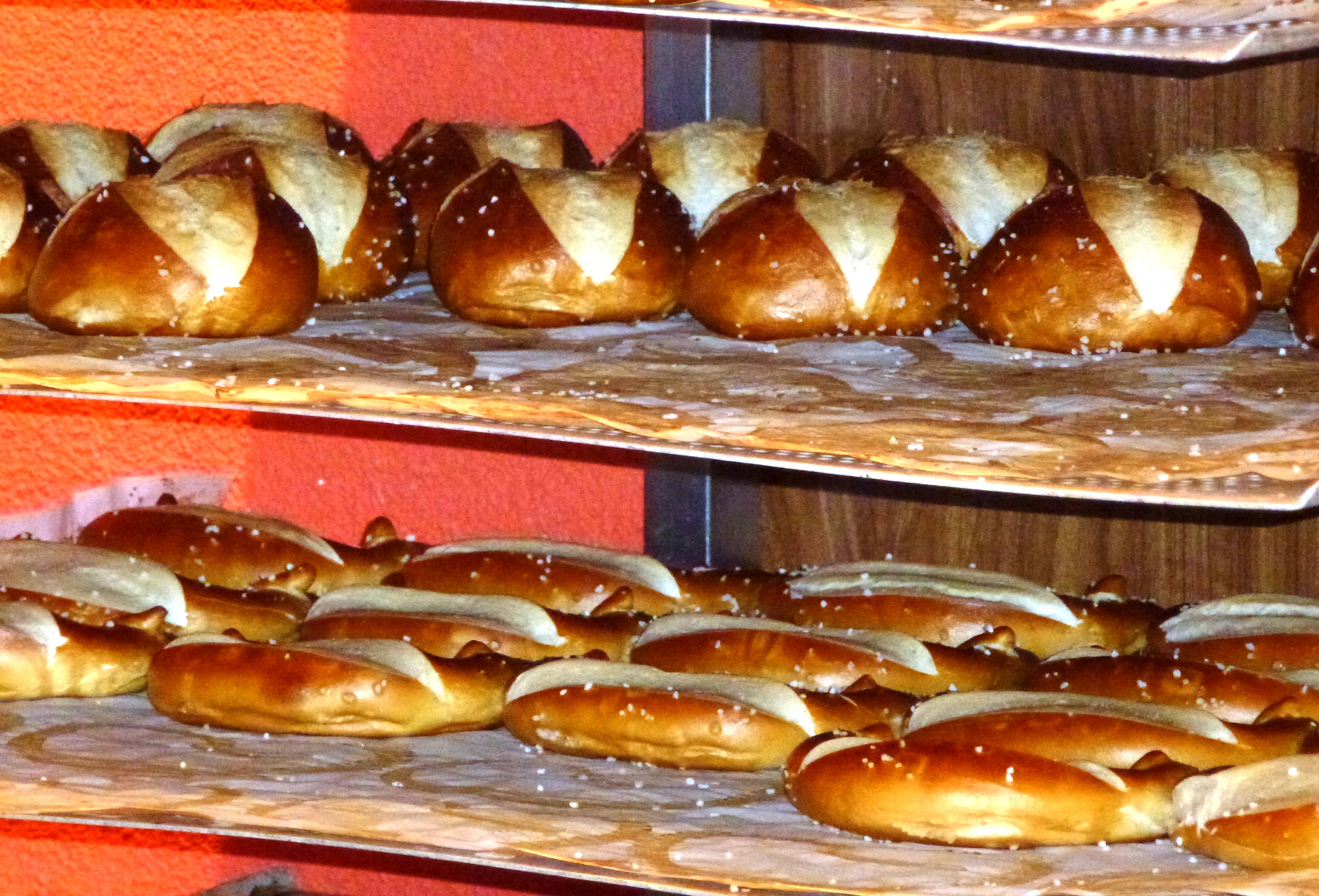Laugenbroetchen und Laugenbrezel.JPG on:
[Wikipedia]
[Google]
[Amazon]
Lye rolls are a baked specialty in Germany (especially in Bavaria and
 In order to cause a Maillard reaction during baking for the characteristic browning effect, a lye roll needs to be coated with a high pH (alkaline) solution. The higher the pH, the stronger the reaction. Lye (
In order to cause a Maillard reaction during baking for the characteristic browning effect, a lye roll needs to be coated with a high pH (alkaline) solution. The higher the pH, the stronger the reaction. Lye (
Swabia
Swabia ; german: Schwaben , colloquially ''Schwabenland'' or ''Ländle''; archaic English also Suabia or Svebia is a cultural, historic and linguistic region in southwestern Germany.
The name is ultimately derived from the medieval Duchy of ...
), France ( Alsace), Austria, and Switzerland
). Swiss law does not designate a ''capital'' as such, but the federal parliament and government are installed in Bern, while other federal institutions, such as the federal courts, are in other cities (Bellinzona, Lausanne, Luzern, Neuchâtel ...
. They are made by immersing bread rolls in a lye solution before baking. The German
German(s) may refer to:
* Germany (of or related to)
**Germania (historical use)
* Germans, citizens of Germany, people of German ancestry, or native speakers of the German language
** For citizens of Germany, see also German nationality law
**Ger ...
name is ''Laugengebäck'' for any baked good dipped in lye. The perhaps best known shape is the pretzel
A pretzel (), from German pronunciation, standard german: Breze(l) ( and French / Alsatian: ''Bretzel'') is a type of baked bread made from dough that is commonly shaped into a knot. The traditional pretzel shape is a distinctive symmetrical ...
, while rolls or buns are specifically called ''Laugensemmel'' or ''Kastanie'' (Bavarian), ''Laugeweckle'' or ''Laugestängle'' (Swabian), and ''Laugenwecken'', ''Laugenbrötchen'' or ''Laugenstange'' (everywhere else in Germany); ''Laugenweckerl'' in Austria; ''Silserli'' or ''Laugenbrötli'' in Switzerland. In some parts of Asia they are known as ''laugen rolls''.
In France, the lye roll is known as mauricette and was invented by Paul Poulaillon in Alsace region when he opened the first Poulaillon bakery in 1973. It was later registered as a trademark with an alternate name Moricette in 1985 and the lard
Lard is a semi-solid white fat product obtained by rendering the fatty tissue of a pig.Lard
entry in the o ...
was replaced by canola oil.
entry in the o ...
Lye
sodium hydroxide
Sodium hydroxide, also known as lye and caustic soda, is an inorganic compound with the formula NaOH. It is a white solid ionic compound consisting of sodium cations and hydroxide anions .
Sodium hydroxide is a highly caustic base and alkali ...
(NaOH) or potassium hydroxide (KOH)) is a highly alkaline agent most commonly used for the purpose. However, lye is not the only way to produce this result: a baking soda or washing soda solution, which is easier to handle and safer to use, will provide a similar product but will not provide as strong a reaction, so the effect will be less pronounced. Lye is the strongest agent, followed by washing soda, then baking soda.
The same solution is also used for preparing pretzels; outside of German-speaking countries they are often the only baked food commonly glazed with a lye solution.
Presentation
Both lye rolls and pretzels are typically covered with salt, preferably pretzel salt, a large-grained salt made from compressed smaller salt particles, which reduces moisture absorption and the hardness of the salt grain. As a snack, lye rolls may also be sold as sandwiches or covered with baked cheese, although this is more recent and less common. Typically they are cut in half and buttered, as large soft pretzels often are in Germany and Switzerland as well. Other toppings for lye rolls nowadays also include poppyseed, sesame, and other seeds as an alternative to salt. In Germany, they are sold in many shapes and forms, many with unique names. For example, ''Laugenstange'' (“Lye bar”) are long oval rolls, while ''Laugenbrötchen'' (“Lye rolls”) are small round rolls.See also
* Other foods prepared with lye, such as Lutefisk,Hominy
Hominy (Spanish: maíz molido; literally meaning "milled corn") is a food produced from dried maize (corn) kernels that have been treated with an alkali, in a process called nixtamalization ( is the Nahuatl word for "hominy"). "Lye hominy" is a ...
, and Chinese noodles
References
Breads German breads Bavarian cuisine Swabian cuisine Swiss breads Austrian cuisine {{Bread-stub